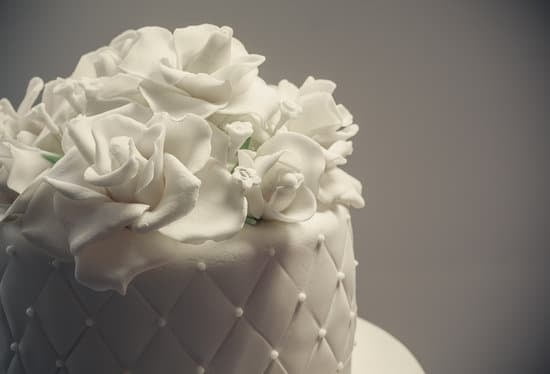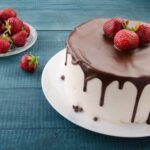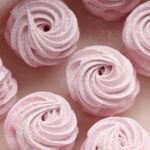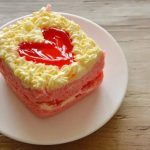When it comes to cake decorating, buttercream frosting is an essential ingredient that can transform any plain cake into a work of art. Whether you’re a seasoned baker or just starting out, mastering the art of buttercream frosting opens up a world of creative possibilities. In this article, we will delve into the basics of buttercream cake frosting, exploring its importance in cake decoration and discussing its various uses.
Buttercream frosting is a versatile and delicious icing that serves as both a filling and a decoration for cakes. It is made by whipping together butter, sugar, and flavorings such as vanilla extract or chocolate to create a smooth and creamy texture. With its ability to hold intricate designs and shapes, buttercream frosting is often used to pipe beautiful flowers, borders, and other decorative elements onto cakes.
There are different types of buttercream frosting that can be used for decorating purposes. The most common variations include American buttercream, Swiss meringue buttercream, and Italian meringue buttercream. Each type has its own unique characteristics in terms of taste, texture, and stability. By understanding the differences between these variations, you’ll be able to choose the right one for your specific cake decorating needs.
In the following sections of this article, we will explore different types of buttercream frosting for decorating cakes in detail. We will also discuss essential ingredients needed for a perfect buttercream frosting and provide step-by-step guidance on how to make it from scratch. Additionally, we’ll delve into various piping techniques used in cake decoration with buttercream frosting and showcase creative designs for different occasions.
Join us on this journey as we unravel the secrets behind creating stunning cake decorations with buttercream frosting. Discover tips and tricks that will help you achieve professional-looking results while embracing your own creativity. So let’s dive right in.
Different Types of Buttercream Frosting for Decorating
When it comes to decorating cakes, buttercream frosting is a staple in every baker’s toolkit. This creamy and flavorful icing not only adds a beautiful finish to cakes but also acts as a delicious glue to hold intricate designs and decorations in place. But did you know that there are different types of buttercream frosting? Each type has its own unique characteristics and advantages when it comes to cake decoration.
One popular type of buttercream frosting is American buttercream. This is the most basic version, made with simple ingredients like butter, powdered sugar, and vanilla extract. American buttercream is known for its sweetness and ability to hold shape well, making it ideal for piping borders or creating intricate designs on cakes. It is also easy to make and can be flavored or colored to suit any occasion.
Another type of buttercream frosting is Swiss meringue buttercream. This version is made by heating egg whites and sugar together until they reach a specific temperature, then whipping them into stiff peaks before adding softened butter. Swiss meringue buttercream has a lighter texture than American buttercream and is less sweet. It spreads smoothly on cakes and can be easily flavored with extracts or melted chocolate.
Italian meringue buttercream is the most delicate and sophisticated type of buttercream frosting. Like Swiss meringue, Italian meringue starts with heating egg whites and sugar syrup. However, the syrup used in Italian meringue is cooked to an even higher temperature, resulting in a stable foam that holds up well under heat or humidity. Italian meringue buttercream has a silky texture that melts in your mouth and can be flavored with various extracts or fruit purees.
Each type of buttercream frosting offers its own unique benefits for cake decoration. Whether you prefer the simplicity of American buttercream or the elegance of Swiss or Italian meringue, there’s a perfect choice for every cake design and flavor profile. Experiment with different types to discover your favorite and take your cake decorating skills to the next level.
Essential Ingredients for a Perfect Buttercream Frosting
Buttercream frosting is a versatile and delicious choice for cake decoration, but achieving the perfect consistency and flavor requires the right combination of ingredients. To make a successful buttercream frosting, there are several essential ingredients that must be included.
- Butter: As the name suggests, butter is a key component of buttercream frosting. It provides richness and flavor to the frosting. It is important to use unsalted butter at room temperature in order to achieve the desired texture and avoid any unwanted saltiness.
- Powdered Sugar: Also known as confectioner’s sugar or icing sugar, powdered sugar is responsible for giving the frosting its sweetness and smooth texture. The fine grain size of powdered sugar makes it easier to incorporate into the frosting without creating a gritty texture.
- Liquid: Milk, cream, or water are typically added to buttercream frosting recipes to achieve the desired consistency. The liquid helps soften the mixture and allows for easier spreading or piping onto cakes.
- Flavorings: Vanilla extract is a common flavoring used in buttercream frosting, providing a classic taste that complements many cake flavors. Other flavorings such as almond extract or citrus zest can be used to add variety and enhance the overall taste.
It’s important to note that different recipes may call for additional ingredients such as salt, cornstarch, or shortening depending on personal preferences or specific variations of buttercream frosting. However, these four main ingredients mentioned above form the foundation for a perfect buttery and sweet frosting.
When making your own buttercream frosting, it is crucial to ensure that all ingredients are at room temperature before beginning. This will allow for easier mixing and better incorporation of flavors. Additionally, using high-quality ingredients will significantly impact the final result of your buttercream frosting.
| Ingredient | Role |
|---|---|
| Butter | Provides richness and flavor |
| Powdered Sugar | Gives sweetness and smooth texture |
| Liquid (milk, cream, or water) | Softens the mixture and aids in spreading or piping |
| Flavorings (vanilla extract, almond extract, etc.) | Adds taste and variety to the frosting |
Step-by-Step Guide to Making Buttercream Frosting from Scratch
Making buttercream frosting from scratch is easier than you might think. With just a few simple steps, you can create a delicious and versatile frosting that is perfect for decorating cakes. Whether you’re a beginner or an experienced baker, this step-by-step guide will help you achieve the perfect homemade buttercream frosting.
Gather your ingredients
Before you begin, make sure you have all the necessary ingredients on hand. For a basic buttercream frosting recipe, you will need:
- Unsalted butter: Butter is the main ingredient in buttercream frosting and provides its rich and creamy texture.
- Powdered sugar: Also known as confectioners’ sugar, this sweet ingredient helps to thicken the frosting and give it a smooth consistency.
- Vanilla extract: Adds flavor to the frosting. You can also use other extracts such as almond or lemon if desired.
- Milk or heavy cream: Liquid is needed to thin out the consistency of the frosting. Milk or heavy cream works well for this purpose.
Cream the butter
Start by placing softened unsalted butter in a mixing bowl. Using an electric mixer on medium speed, beat the butter until it becomes light and fluffy. This process usually takes about 2-3 minutes. Be sure to scrape down the sides of the bowl with a spatula occasionally to ensure that all of the butter is well incorporated.
Add sugar and flavorings
With the mixer running on low speed, gradually add powdered sugar to the creamed butter. Allow each addition of sugar to fully incorporate before adding more. Once all of the powdered sugar has been added, increase the mixer speed to medium and continue beating until everything is well combined.
Next, add vanilla extract (or any other preferred flavorings) and continue mixing until smooth. At this point, your frosting may be very thick and stiff.
Thin out with milk/cream
To achieve the desired consistency, gradually add milk or heavy cream to the frosting. Start with a small amount and mix it in. You can always add more liquid if needed. Keep in mind that you want the frosting to be thick enough to hold its shape when piped, but not too stiff that it’s difficult to work with.
Continue mixing until the buttercream reaches a smooth and fluffy texture. Be sure not to overmix as this may result in a grainy consistency.
By following these simple steps, you can make your own delicious buttercream frosting from scratch. With practice, you’ll find that making your own frosting allows for customization and experimentation with different flavors and textures. Get creative and have fun decorating your cakes with this versatile and tasty frosting.
Mastering Various Buttercream Piping Techniques
When it comes to cake decoration, one of the most versatile and widely used mediums is buttercream frosting. Not only does it provide a smooth and delicious coating for cakes, but it also allows for intricate designs and stunning decorations. Mastering various buttercream piping techniques is essential for any aspiring cake decorator or baker looking to add that extra touch of creativity to their creations.
Piping Bags and Tips
Before delving into the different piping techniques, it’s important to understand the tools needed to achieve these designs. Piping bags are a must-have tool for any cake decorator. They come in various sizes and materials such as disposable plastic or reusable cloth. Additionally, there is a wide range of piping tips available that create different patterns and shapes when used with the piping bag. Popular tips include round tips, star tips, petal tips, leaf tips, and more.
Rosettes Technique
One classic and elegant piping technique is creating rosettes on cakes using buttercream frosting. To achieve this design, start by fitting a piping bag with a star tip. Hold the piping bag perpendicular to the cake surface and lightly squeeze while swirling in a clockwise motion from the inside out. Continue this motion until the desired size of the rosette is reached.
Shell Technique
The shell technique is another commonly used method that adds texture and dimension to cakes. Using either a round or star tip, hold the piping bag at a 45-degree angle above the cake surface. Apply gentle pressure while moving from left to right in an S-shaped motion, overlapping each shell slightly with the previous one.
Writing Technique
Adding personalized messages or names on cakes can enhance their sentimental value. The writing technique involves using a small round writing tip paired with a steady hand. Fill a piping bag fitted with the writing tip and gently squeeze to create letters or words directly onto the cake surface. It’s helpful to practice on a piece of parchment paper before proceeding onto the cake.
By mastering these buttercream piping techniques, you can transform plain cakes into works of art. Experiment with different tips, colors, and designs to create unique and eye-catching creations. Remember, practice makes perfect, so don’t be discouraged if your first attempts are not flawless. With time and patience, you’ll become a pro at buttercream piping techniques.
Creative Buttercream Frosting Designs and Ideas
Buttercream cake frosting is not only delicious, but it can also be a versatile and creative medium for decorating cakes. With its smooth texture and ability to hold various shapes and designs, buttercream frosting opens up a whole world of possibilities for cake decoration. In this section, we will explore some creative buttercream frosting designs and ideas that can inspire your own cake creations.
- Floral Designs: Buttercream frosting can be used to create stunning floral designs on cakes. Whether it’s delicate roses, vibrant sunflowers, or elegant hydrangeas, the possibilities are endless. By using different piping tips and techniques, you can achieve lifelike petals and leaves that add a touch of natural beauty to your cakes.
- Ombre Effect: Ombre designs are becoming increasingly popular in cake decoration, and buttercream frosting is the perfect medium to achieve this gradient effect. By using different shades of the same color or even transitioning between multiple colors, you can create a visually striking ombre design on your cakes.
- Textured Patterns: Buttercream frosting allows you to add texture to your cake designs. From basketweave patterns to quilted textures, there are endless options for creating unique and eye-catching patterns with buttercream frosting. Using specific piping tips or even stencils can help you achieve these decorative textures.
In addition to these specific design ideas, buttercream frosting also allows for limitless creativity when it comes to customizing cakes for various occasions. Whether it’s birthdays, weddings, or holidays like Christmas or Halloween, you can use buttercream frosting as a canvas to bring your ideas to life.
With some practice and experimentation, you’ll find that creating beautiful cake designs with buttercream frosting becomes easier and more enjoyable. Don’t be afraid to try new techniques or incorporate different elements into your designs – let your creativity shine through. So next time you’re looking for a creative cake decoration idea, consider using buttercream frosting to achieve stunning and personalized designs that are sure to impress.
Troubleshooting Common Issues with Buttercream Frosting
Working with buttercream frosting can sometimes come with its challenges, but don’t fret. In this section, we will address some common issues that may arise when working with buttercream frosting and provide you with helpful solutions and tips for overcoming them.
One common problem that cake decorators often face is the issue of separation in their buttercream frosting. This occurs when the butter separates from the sugar, resulting in a grainy and uneven texture. To prevent separation, it is important to ensure that your butter is at the correct temperature before mixing it with the sugar.
Softened butter should be cool to the touch and pliable, but not melted. If your butter is too warm, it can easily separate when combined with the sugar. Additionally, make sure to cream your butter and sugar together for an adequate amount of time until light and fluffy.
Another issue that may arise is graininess in your buttercream frosting. Graininess can occur due to undissolved sugar crystals or overbeating the mixture. To avoid this problem, use powdered sugar instead of granulated sugar as it dissolves more easily.
When adding powdered sugar to your mixture, sift it beforehand to remove any lumps or clumps. It is also crucial not to overmix your buttercream once all the ingredients are combined as overbeating can cause the butterfat to separate, leading to a grainy texture.
Furthermore, air bubbles can be a concern when working with buttercream frosting especially when using a piping bag for decoration purposes. The presence of air bubbles may result in an uneven finish or unwanted holes on your cake design.
To minimize air bubbles in your frosting, start by slowly mixing your ingredients together at a low speed until well combined. Then scrape down any excess mixtures from the sides of your bowl before increasing speed gradually for a final mix until light and creamy consistency is achieved.
By troubleshooting these common issues with buttercream frosting, you can ensure that your cake decoration process goes smoothly. Remember to follow the tips and suggestions provided above to overcome separation, graininess, and air bubble problems. With these solutions in hand, you’ll be well on your way to creating beautifully decorated cakes with a flawless buttercream finish.
| Common Issue | Solution |
|---|---|
| Separation of butter and sugar | Ensure the butter is at the correct temperature before mixing it with the sugar. Cream the butter and sugar together for an adequate amount of time until light and fluffy. |
| Graininess in buttercream frosting | Use powdered sugar instead of granulated sugar and sift it beforehand to remove any lumps or clumps. Avoid overmixing the mixture once all ingredients are combined. |
| Air bubbles in buttercream frosting | Mix ingredients slowly at a low speed until well combined. Scrape down excess mixtures from the sides of the bowl before increasing speed gradually for a final mix until a light and creamy consistency is achieved. |
Storing and Preserving Buttercream Frosting
One of the many advantages of buttercream frosting is its ability to be made ahead of time and stored for later use. Properly storing and preserving buttercream frosting ensures that it maintains its freshness and quality. Whether you have leftover frosting from a cake, or you want to prepare it in advance for future use, here are some tips on how to store and preserve buttercream frosting effectively.
- Refrigeration: Buttercream frosting can be stored in an airtight container in the refrigerator for up to one week. Before storing, make sure that the container is clean and dry to prevent moisture from seeping into the frosting. To avoid any potential contamination, always use a clean utensil or spatula when scooping out the desired amount of frosting.
- Freezing: If you want to store your buttercream frosting for an extended period, freezing is a great option. The frozen buttercream can last up to three months while maintaining its taste and texture. To freeze buttercream frostings, transfer them into an airtight freezer-safe container or freezer bag. It is recommended to divide the frosting into smaller portions before freezing so that you can thaw only what you need at a time.
- Thawing: When you are ready to use your refrigerated or frozen buttercream frosting, allow it to come to room temperature before reusing or decorating with it. Thawing it slowly in the refrigerator overnight will help maintain its consistency and prevent any separation.
It’s important to note that although refrigeration and freezing help preserve buttercream frostings’ quality, there may be a slight change in texture after thawing since some ingredients like butter may solidify or separate temporarily. However, with proper mixing, often using an electric mixer on low speed until smooth again, these issues can easily be resolved.
By following these storage guidelines, you can ensure that your homemade buttercream frostings stay fresh and delicious until you are ready to unleash your creativity again.
Conclusion
In conclusion, buttercream cake frosting is a versatile and essential component of cake decoration. Throughout this article, we have explored the different types of buttercream frosting, the necessary ingredients for a perfect recipe, step-by-step instructions for making it from scratch, various piping techniques, creative design ideas, troubleshooting tips, and proper storage methods. With all this knowledge in hand, it’s time to unleash your creativity and have fun with buttercream frosting.
Buttercream frosting allows you to transform simple cakes into stunning works of art. Whether you are a seasoned decorator or just starting out, there is no limit to what you can create with this delightful confection. From whimsical birthday designs to elegant wedding cakes, the possibilities are endless.
Remember to experiment and try new techniques. Don’t be afraid to take risks and push the boundaries of your creativity. Buttercream frosting is forgiving and can easily be fixed or adjusted if something doesn’t go as planned. Embrace mistakes as opportunities for growth and learning.
So go ahead and dive into the world of buttercream cake frosting. Let your imagination run wild as you transform plain cakes into edible masterpieces. Whether it’s a special occasion or just a regular day that calls for a sweet treat, embrace your creative side and enjoy the artistry that comes with decorating cakes using buttercream frosting.
Frequently Asked Questions
What is the best type of buttercream frosting for decorating cakes?
The best type of buttercream frosting for decorating cakes largely depends on personal preference and the desired outcome. One popular option is American buttercream, which is made with butter, powdered sugar, and vanilla extract. It offers a smooth texture and is easy to work with, making it ideal for beginners.
Swiss meringue buttercream is another choice that results in a lighter and silkier texture. It involves heating egg whites and sugar before incorporating butter, creating a stable frosting perfect for intricate designs. Italian meringue buttercream is similar but uses a hot sugar syrup instead of direct heat on the egg whites, resulting in a more stable frosting.
Can you decorate a cake with buttercream frosting?
Yes, you can absolutely decorate a cake with buttercream frosting! Buttercream is one of the most versatile frostings when it comes to decorating because it can be easily colored, piped into various shapes and designs, smoothed onto cakes using different techniques (such as icing spatulas or bench scrapers), and even used as a base for covering cakes with fondant.
The smoothness and ability to hold its shape make buttercream an excellent choice for both simple decorations like borders or rosettes, as well as more intricate designs like flowers or piping details.
Is buttercream or icing better for decorating?
Whether buttercream or icing is better for decorating can depend on the specific context and desired outcome. Generally speaking, both terms refer to frostings used for decorating cakes, cookies, or other baked goods.
Buttercream refers specifically to frostings made primarily from butter and sugar (either powdered or granulated) beaten together until creamy and smooth. On the other hand, icing has a broader meaning that encompasses various types of sweet coatings such as glazes or royal icing made from powdered sugar mixed with liquid (like water or lemon juice).

Welcome to our cake decorating blog! My name is Destiny Flores, and I am the proud owner of a cake decorating business named Cake Karma. Our mission is to provide delicious, beautiful cakes for all occasions. We specialize in creating custom cakes that are tailored specifically to each customer’s individual needs and tastes.





